Breaking Up With Vegan Leather
The microplastics, the peeling, the pilling, the textile waste, the climate, the...
If you’ve ever done anything involving food or shopping with me, you’ve had the pleasure of finding out that I’m an ethical vegan (insert my favorite vegan meme here - I’m best represented by the bottom left image). My vegan origin story started in high school after I saw the movie City Slickers and vowed to never eat meat again. Why? One word: Norman.
As a vegetarian, and later as a newly-minted vegan, I wore leather and some wool, mostly shoes, bags, and sweaters, never feeling quite right about larger pieces like leather jackets and coats. Then eight years ago I stumbled across the cruelty-free world when I was looking at skincare reviews and was shocked to find out that cosmetics companies are still testing on animals. This became my impetus to go cruelty-free and stop buying and wearing animal products in one fell swoop.
Side note: curious about cruelty-free beauty, but don’t know where to start? Cruelty-Free Kitty and Leaping Bunny are incredible resources. Or please feel free to comment below with any questions.
When I Wear Vegan Leather I Won’t Tell Anyone, But There Will Be Signs
Ever since then, I’ve been merrily buying vegan leather and wool alternatives, taking waaaay too long to understand that they weren’t great for the environment, then being caught in the moral dilemma of not wanting to harm animals or the planet for fashion. In the beginning, vegan leather alternatives seemed like a good compromise: they were so much more affordable, had nice texture and weight, with a plethora of trend-right options at fast fashion brands. But after a few years of wear I noticed that my vegan leather pieces seemed to be…crumbling? And my acrylic and polyester sweaters and coats were a pilled mess.
At first I thought: You bought everything at fast fashion brands, what did you expect? Of course it’s going to fall apart. Because my fancy vegan leather items, like my Stella McCartney shoes and bags, Bhava boots, and Stand Studio bomber jacket were still going strong. And I have one synthetic Zara sweater and skirt set that miraculously only has minor pilling. But when I saw this same issue set in with my nicer vegan pieces, I started to rethink what not harming animals and the planet meant in a bigger context.
Strike 1: Let The Pilling Begin
Last December I bought a Frankie Shop faux wool trench coat that I had been eyeing for months. I was doing my own version of the Five Things pledge and this was my last new thing of 2023.
I was so excited about the mocha mousse color, maxi length, and slightly oversized fit that wore it every day. After a week the excessive pilling began. Not only did it look like I’d had my brand-new coat for a casual five years, but my fabric shaver barely made a dent in any of the pilling. Ironically, I had bought this coat as a replacement to my recycled polyester Zara coat with pilling so extreme that it was bionically resistant to my fabric shaver.
So I threw both of them out and started over by buying another new faux wool coat…j/k, I still wear both coats and try to shave them down when the pilling gets more out of control than usual. I also found that my dog gets great enjoyment out of sleeping on my Zara coat, so if all else fails I could make it into a blanket. But I was beyond disappointed to have my Frankie Shop coat’s quality go downhill so fast, especially since I had planned this as a long-term investment in my wardrobe.
Strike 2: The Peel Is Real
I love Stand Studio for their modern outerwear with a big range of vegan leather options and their Autumn Quilted Jacket is one of my best outerwear purchases. So when I saw a faux leather Stand Studio shirt on The RealReal a couple of years ago, I didn’t hesitate to buy it. Once it was delivered, my merchant intuition said that this was probably a sample and not from the final production, and my instinct was confirmed when I looked up images online. The final production version had buttons instead of snaps, a more tailored design, and finished edges. I decided to keep it anyway since I liked the design and TRR’s return shipping fee shook out to 22% of the price of my shirt.
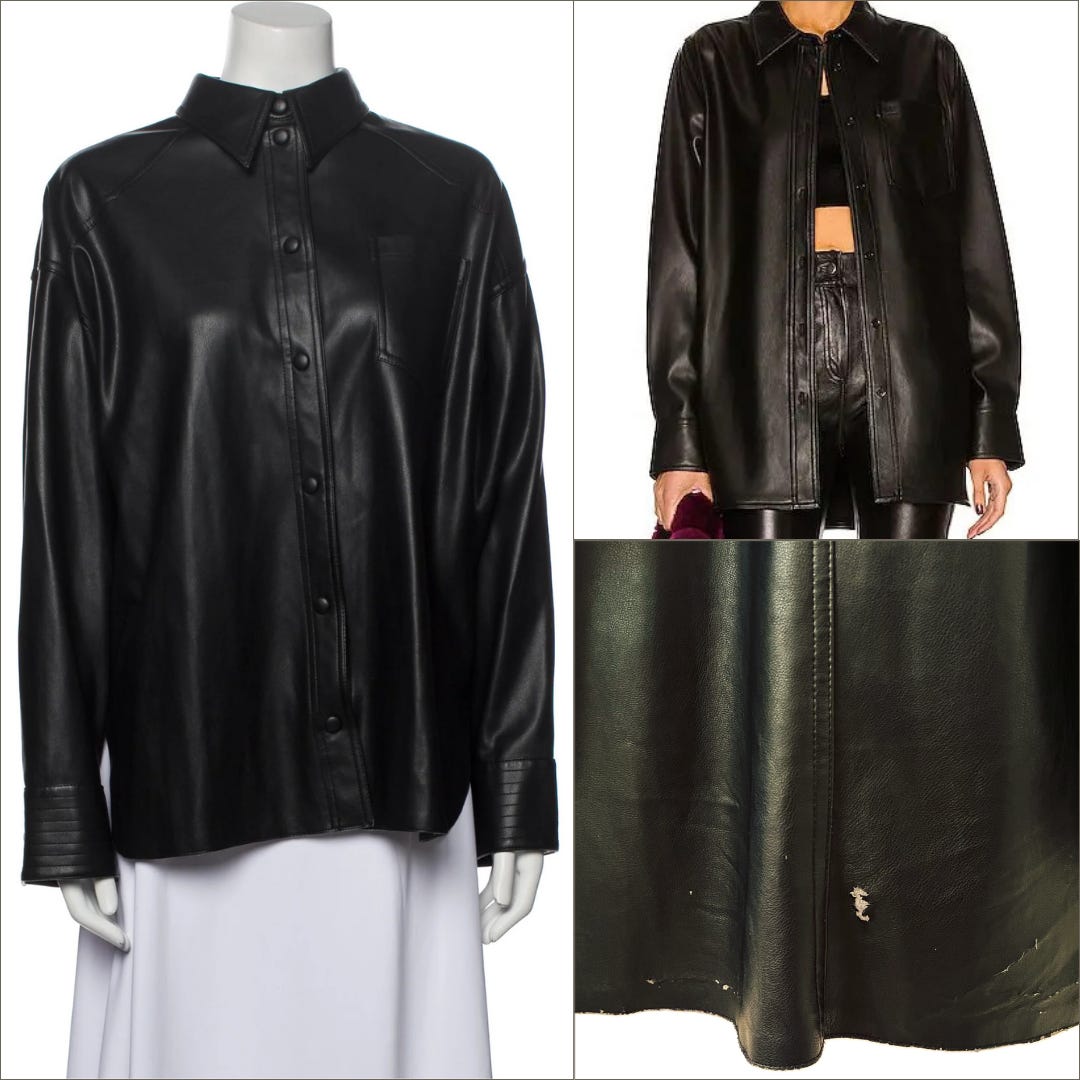
I’ve only worn my shirt untucked like a jacket until last month when I thought I’d jazz up my outfit for a class presentation by tucking my shirt into my secondhand Pixie Market faux leather skirt. When I went to wear it again the other day, I noticed that my pristine shirt now had obvious peeling and wear and tear on the bottom hem since the fabric was too delicate to withstand being tucked into a fully lined skirt, just like my other vegan leather jackets and belts couldn’t take the mechanical wear and tear from everyday friction. (In Stand Studio’s defense, if my shirt is a sample it was likely created in a lower-quality fabric that the brand wouldn’t typically use, which is why my quilted bomber still looks great after two years of wear and my shirt jacket does not.)
Strike 3: The Microplastics
You might remember this post from a few months ago about my ethical struggle with synthetic textiles that are meant to be vegan alternatives. At the time I didn’t think I could bring myself to wear leather again, but was leaning towards secondhand wool to balance ethics with environmental responsibility.
After seeing the damage to my Stand Studio shirt, I pulled together all of the peeling faux leather and pilled faux wool I owned (special shout out to the vest in the first image that literally rains shredded pieces of vegan leather whenever I touch it and my pilled coats that are probably shedding microfibers willy-nilly all over the city) and thought that something has to give. The amount of textile waste and microplastic shed had become too much for me, and I was only one person. Try multiplying my faux leather and wool by tens of millions of people.
The Responsible Textile Recovery Act of 2024
I’m still at a loss of how to upcycle my degraded vegan leather. I don’t trust clothing take-back programs yet since there’s little transparency and my items are in such poor condition that they’ll just end up in a landfill if I donate them. There’s some light at the end of the tunnel with California’s Responsible Textile Recovery Act of 2024, which mandates that brands doing business in California must create and join a Producer Responsibility Organization (PRO) to provide solutions for recycling textile waste. This is exciting since it takes the onus off of the consumer to figure out sustainable end-of-life disposal, pushing this issue back to the businesses (over)producing the clothing. The downside is that the law won’t truly be implemented for about five years since plans don’t need to be in place until July 2030. Until then, I’m the proud owner of a rag-tag collection of vegan leather past its prime and will hang onto these until PROs are up and running or there’s a separate transparent circular solution for synthetic materials like this.
Secondhand First
With all that being said, I’m doing something that is quite frankly blowing my vegan mind: I’m going to start shopping for leather and wool secondhand. Preferably recycled + secondhand, but definitely not firsthand since it doesn’t feel ethically right for me (emphasis on the “for me” part). The more I learn about fashion’s role in the climate crisis and microplastics impacting both humans and animals, the less I want to contribute to it by buying plastic-based textiles that require continual replacing. And a quick peruse of any resale marketplace is bursting with secondhand leather and wool that needs a good home.
I look forward to the day when next-gen plant-based fabrics are more accessible, but until then I’m going to slowly back away from traditional oil-based synthetic vegan fabrics. I know that not all ethical vegans will agree with my choice, and that’s okay. I believe that this is my best solution to balance animals and the planet. I’m not sure how long it will take me to fully feel comfortable with this idea (I still have a visceral reaction to terms like lambskin and ponyskin), but I’ve started looking at secondhand options to maybe, potentially buy something in the new year.
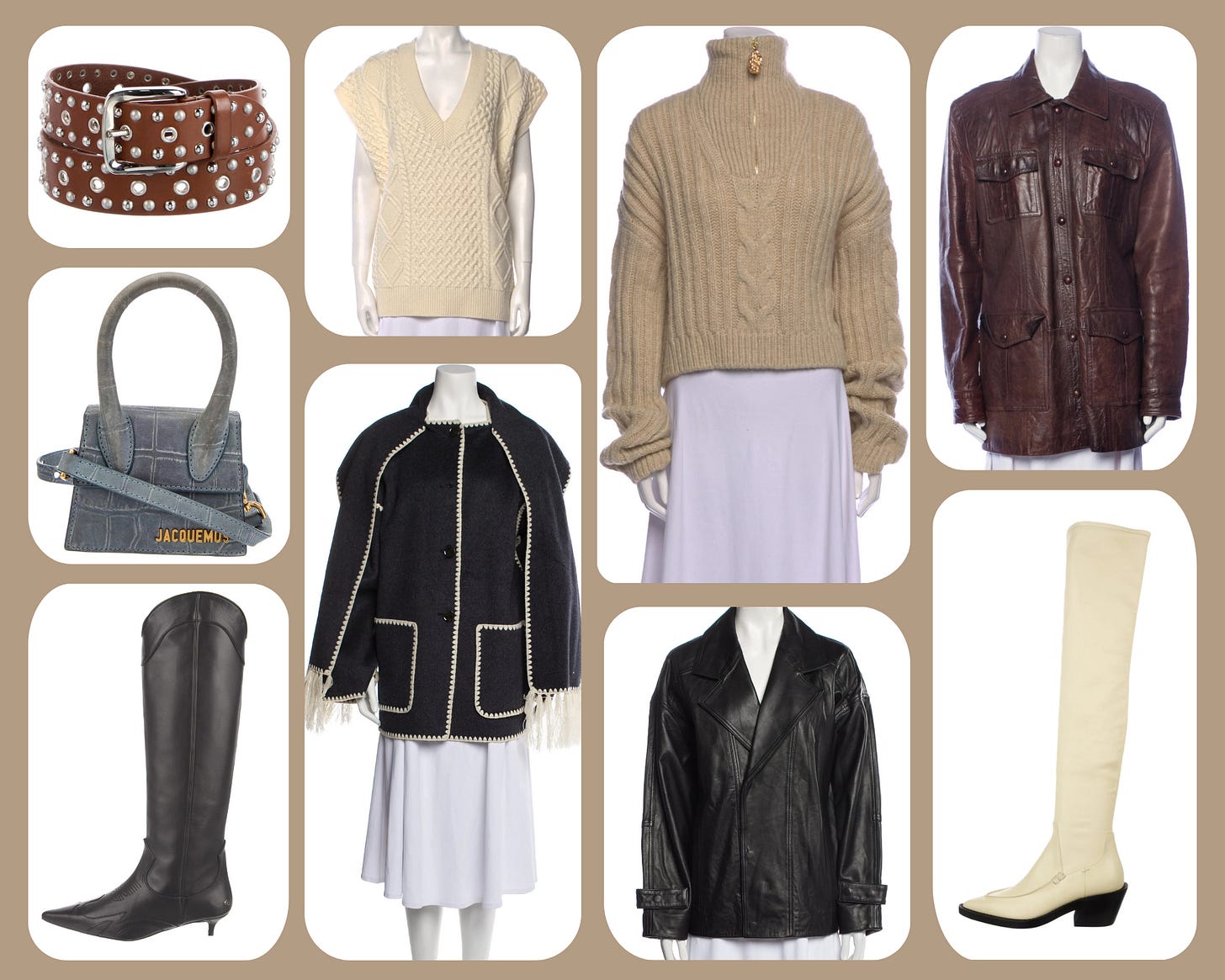
That’s it for this week, thanks for reading! I’ll be back to my regular Wednesday schedule next week now that school is winding down for the semester. If you have any tips on what to look for when shopping for leather or wool secondhand, please feel free to share below. I’m in learning mode after an eight year hiatus and appreciate any tips!
One last shoutout for my new chat, which is mostly me talking to myself about fashion memes, intriguing retail/fashion/consumer behavior articles, and things from The RealReal that need a good home. And also some festive books now that we’re in peak holiday🎄 I’d love it if you joined me!

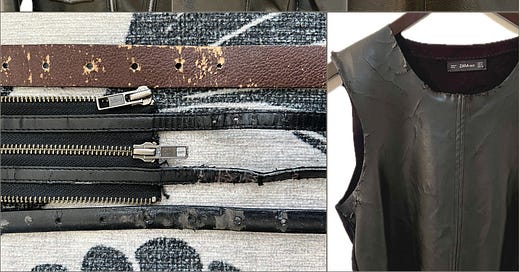



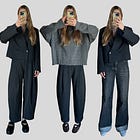
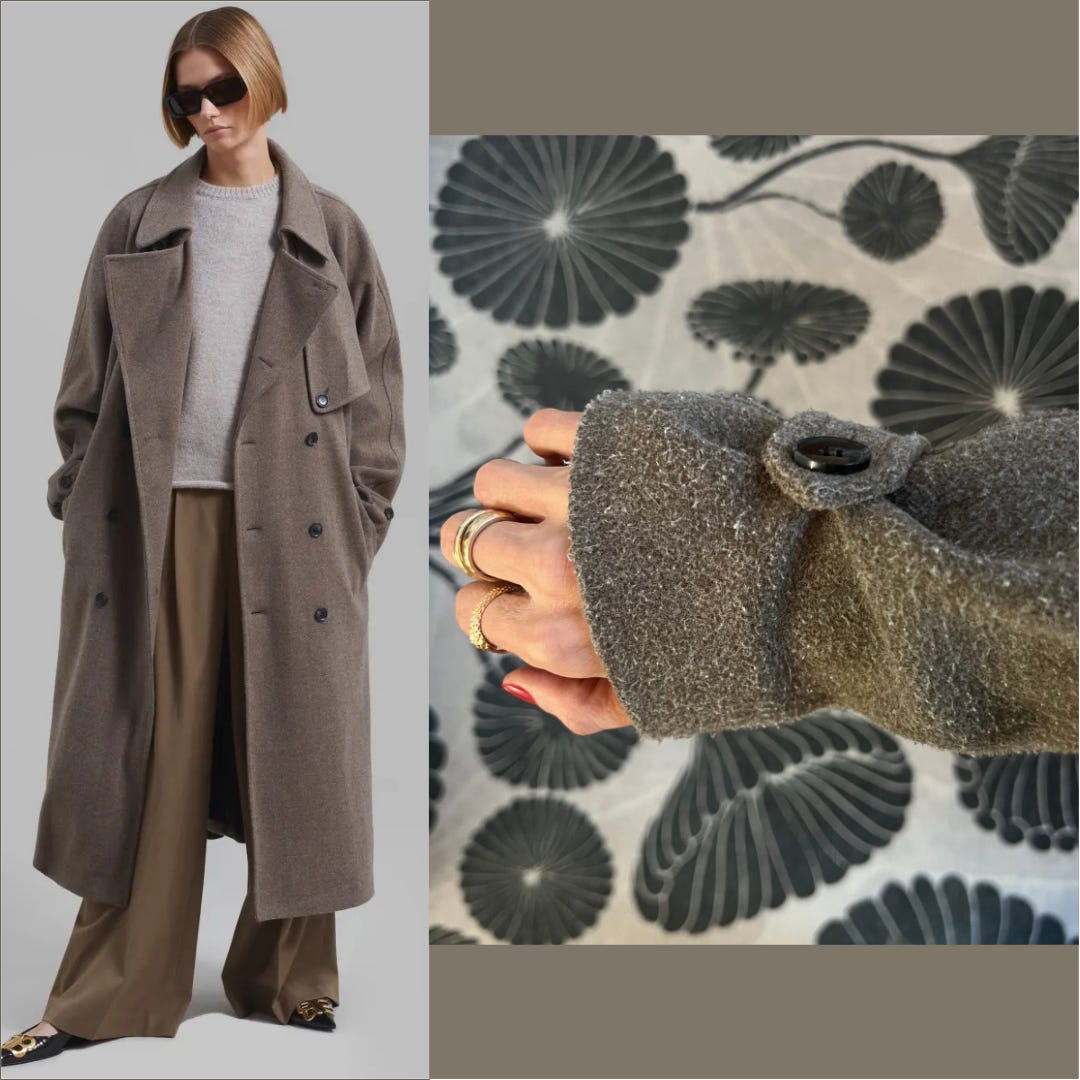


This was interesting to read. While I was reading it I thought shopping for wool and leather secondhand might be a good answer. Why would vegans be against this in general? Is it because by wearing these fabrics you’re still kind of advertising them to the world and in that way effectively promoting those materials?
As always I admire your thoughtful commitment to sustainability.
This was so interesting thanks Tina!